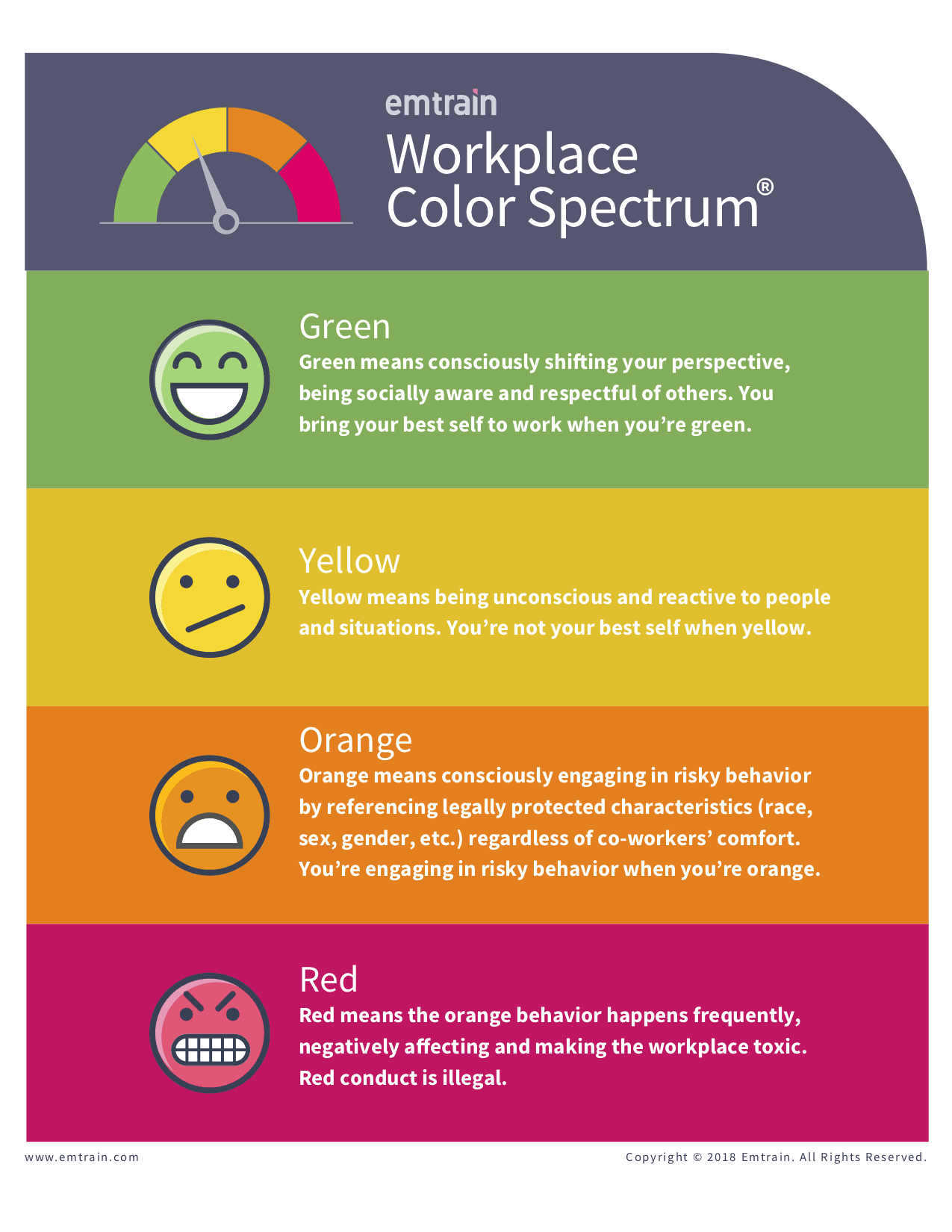All of our content is authored and reviewed by employment lawyers and industry experts from Ogletree Deakins, DLA Piper and other global law firms. Our content team is also led by our CEO Janine Yancey, a former employment litigator and workplace investigator who is a certified expert witness on harassment training in both state and federal courts. Janine Yancey was also the expert witness to the California State Senate, who helped author SB 1343 in 2018 – California’s harassment training mandate for all California employees
Address the specific needs of your workforce, from communication and teamwork to leadership and emotional intelligence
Building on human-centric skills provides employees with the tools needed to continually navigate the workplace with grace and understanding.
Tools like the Workplace Color Spectrum® teach employees to call out behavior, not people; creating space for personal and professional growth, instead of criticism
We measure employees’ responses to workplace scenarios, so you can identify hot spots and hone in on skills that require further development.
Distinguishing harassment from inappropriate behavior isn’t always clear. Emtrain’s Employee Complaint Decision Tree, powered by the Workplace Color Spectrum®, helps both HR teams and employees characterize harassment or bad behavior with a few simple questions.
Get a preview of our industry-leading preventing harassment training video content that dives deep into the complex social issues of our time.
Yes, Emtrain’s course covers all protected characteristics required by the state.
Every year! Our team ensures we hit topical, timely, and relevant issues and cover specific state mandate requirements.
Yes! We have an in-house video team, actors, and producers to create the most compelling workplace scenarios.
Yes. Emtrain’s trainings come equipped with over 60 machine translation options available.
Sexual harassment prevention training is required in 8 U.S. states: California, Connecticut, Deleware, Washington D.C., Illinois, Maine, New York, and Washington. It is also required in every Canadian province, and a number of countries across the globe. For more information on specific training requirements in the US, Canada, and globally, click here.
Bystander intervention training is required in Chicago, IL, but we recommend it regardless of location.
Used by thousands of organizations since 2013, Emtrain’s Workplace Color Spectrum® is an easy behavior rating tool to help you and your colleagues communicate more effectively about harassment.
Have you ever heard someone use the term “harassment” incorrectly to mean anything they believe is unfair or bad? Using the Workplace Color Spectrum can reduce undue accusations and emotional responses — and create positive behavioral change.

Emtrain’s Ask the Expert feature enables users to ask questions about compliance, bias, harassment, and inclusion as they come up. It’s all confidential, and answers are sent straight to their inbox.
Sexual harassment prevention training is one of the most demanding compliance requirements in the U.S., with mandates varying across federal,...
Understanding what is a hostile work environment is critical for both employees and employers. A hostile workplace doesn’t just hurt...
What is the bystander effect, and how does it show up at work? Originally studied in the context of public...
Creating a safe and respectful workplace doesn’t happen by chance—it starts with understanding your legal obligations. If your company operates...
Navigating state-specific training laws can be tricky—but in Maine, the rules are clear and enforceable. Maine sexual harassment training requirements...
Every Illinois employer has a legal obligation to provide annual sexual harassment prevention training. But what exactly does that mean—and...
If your organization has employees in Delaware, you may be wondering: What are the Delaware harassment training requirements? Since 2019,...
If your organization operates in the state of Connecticut, understanding the Connecticut sexual harassment training requirements is essential to compliance...